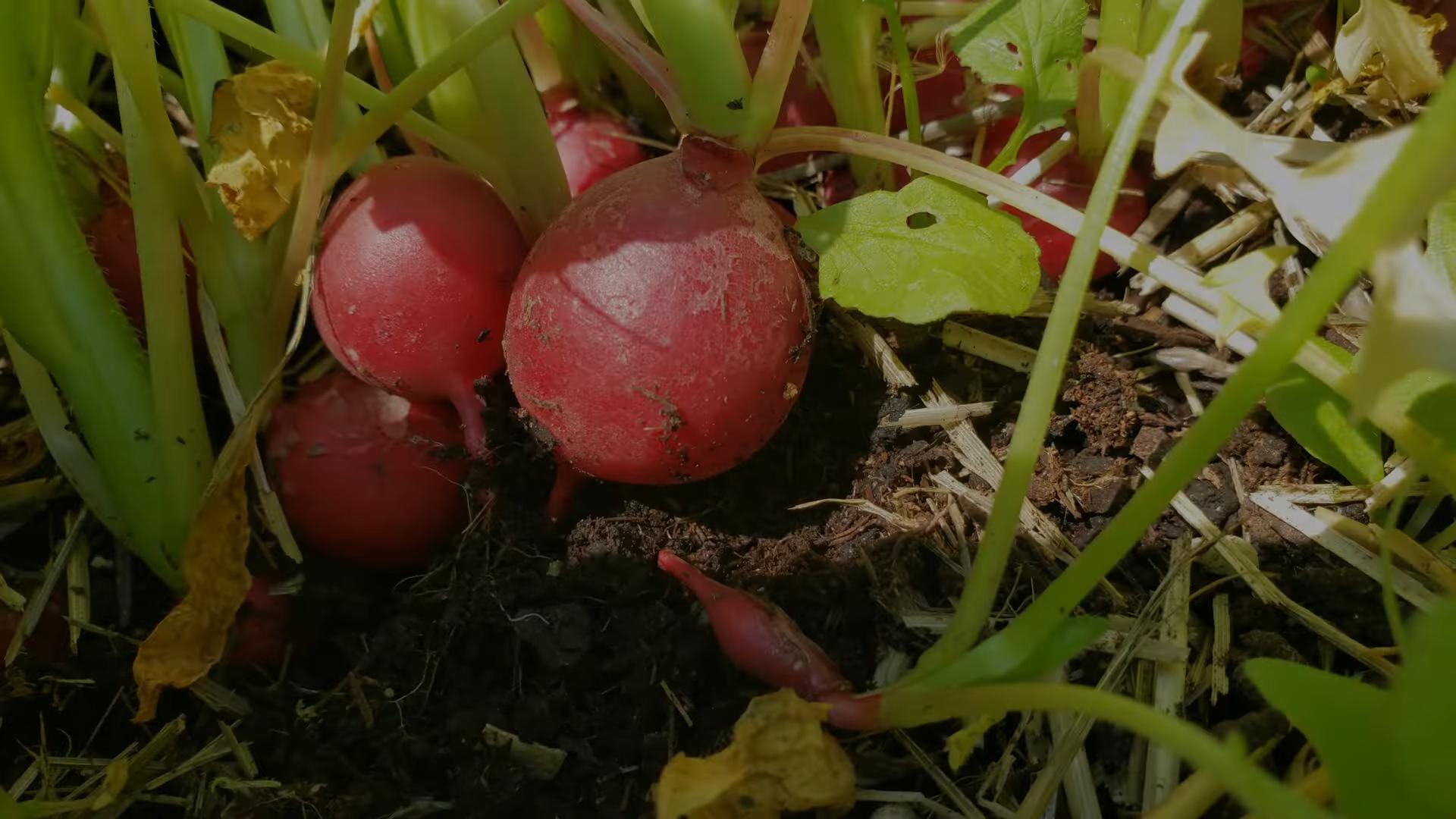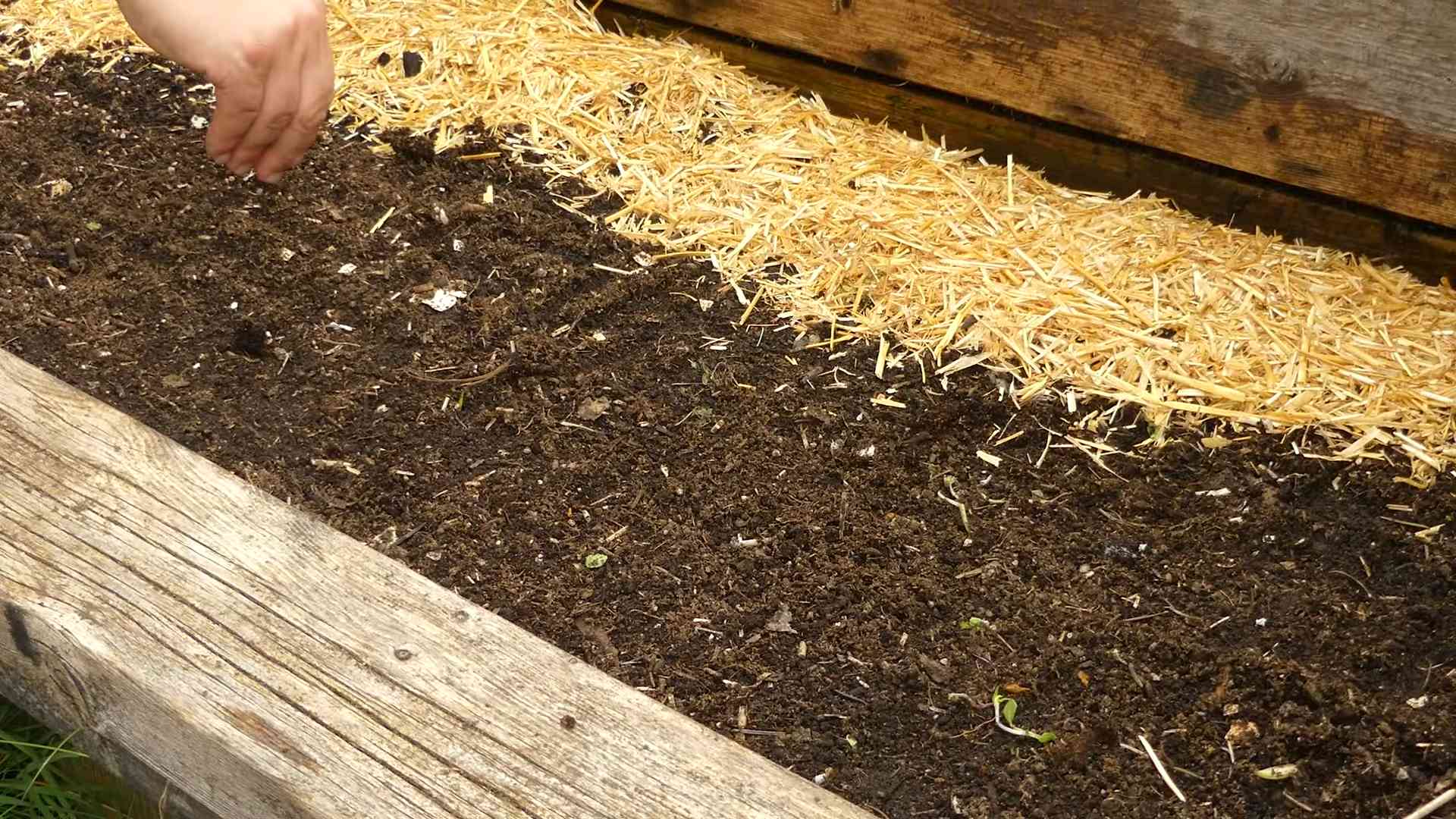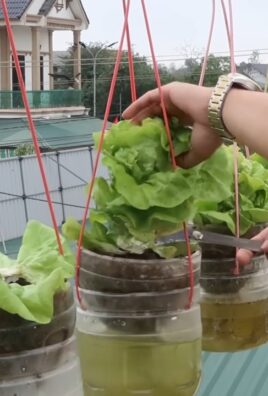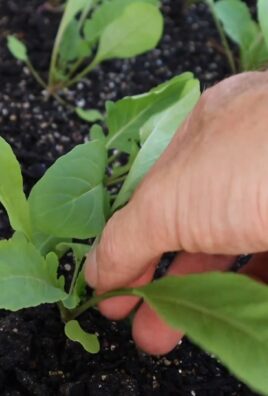Harvesting Honeyberries can feel like striking gold in your own backyard! Imagine plucking those sweet-tart, elongated berries straight from the bush, knowing you nurtured them from tiny plants to bountiful producers. But knowing *when* and *how* to harvest these little gems is key to enjoying their full flavor and maximizing your yield.
For centuries, these hardy berries, also known as Haskap, have been cherished in colder climates like Russia and Japan, where they’re prized for their early ripening and exceptional nutritional value. Now, they’re gaining popularity worldwide, and for good reason! Who wouldn’t want a delicious, antioxidant-rich fruit that’s ready to harvest before strawberries even think about turning red?
I know, I know, you’re probably thinking, “Okay, great, but why do I need a whole article on harvesting honeyberries? Can’t I just pick them when they look ripe?” Well, you *could*, but you might be missing out! Honeyberries have a sneaky habit of turning blue long before they’re truly ready. Picking them too early can result in a disappointingly sour experience. This guide will give you the insider tips and tricks to ensure you’re harvesting at the peak of ripeness, guaranteeing the sweetest, most flavorful berries possible. Plus, I’ll share some clever DIY hacks to make the harvesting process faster and easier, so you can spend less time picking and more time enjoying your delicious honeyberry bounty!

Harvesting Honeyberries: A DIY Guide to Sweet Success
Okay, honeyberry enthusiasts! So, you’ve nurtured your honeyberry bushes, watched them bloom, and now those beautiful berries are finally starting to plump up. Harvesting time is here, and I’m so excited to guide you through the process! It might seem straightforward, but there are a few tricks to ensure you get the best flavor and yield. Let’s dive in!
Understanding Honeyberry Ripeness
Before we even think about picking, we need to talk about ripeness. Honeyberries are notorious for being a little tricky to judge. They can look ripe – a beautiful deep blue – but still be tart or even bitter inside. Here’s what I’ve learned over the years:
* Color Isn’t Everything: Don’t rely solely on the color. While a deep blue is a good indicator, it’s not the only factor. Some varieties get a deep blue color long before they’re truly ready.
* The “Squish Test”: Gently squeeze a berry. A ripe honeyberry will be slightly soft to the touch, similar to a ripe blueberry. If it’s rock hard, it needs more time.
* The Taste Test (Crucial!): This is the most important step! Pick a few berries from different parts of the bush and taste them. You’re looking for a sweet, slightly tangy flavor with no bitterness. If they’re still tart, wait a few days and try again.
* Internal Color: If you’re still unsure, sacrifice a berry. Cut it open. A ripe honeyberry will have a deep purple-red color throughout the flesh. If it’s still green or pale inside, it’s not ready.
* Bird Activity: Keep an eye on the birds! If they’re starting to feast on your honeyberries, it’s a pretty good sign they’re getting ripe.
Tools You’ll Need
Luckily, you don’t need a ton of fancy equipment for harvesting honeyberries. Here’s what I recommend:
* Buckets or Baskets: Choose containers that are comfortable to carry and won’t crush the berries. I like using shallow baskets lined with paper towels.
* Gloves (Optional): Honeyberries can stain your fingers a bit, so if you’re concerned about that, wear gloves.
* Ladder or Step Stool (If Needed): If you have taller bushes, you might need a little extra height to reach the berries at the top.
* A Comfortable Stool or Chair: Harvesting can take a while, so make sure you’re comfortable!
* Water Bottle: Stay hydrated, especially if you’re harvesting on a warm day.
The Harvesting Process: Step-by-Step
Alright, let’s get to the fun part! Here’s my step-by-step guide to harvesting honeyberries:
1. Prepare Your Containers: Line your buckets or baskets with paper towels. This will help absorb any moisture and prevent the berries from getting soggy.
2. Start at the Bottom: Honeyberries typically ripen from the bottom of the bush upwards. Start by checking the berries on the lower branches.
3. Gently Pluck the Berries: Hold the berry between your thumb and forefinger and gently pull it away from the stem. Ripe berries should come off easily. If you have to tug hard, they’re probably not ready yet.
4. Avoid Crushing the Berries: Be careful not to squeeze the berries too hard, as they can bruise easily.
5. Fill Your Containers Carefully: Don’t overfill your containers, as this can crush the berries at the bottom. I usually fill them about two-thirds full.
6. Check for Hidden Berries: Honeyberries can be sneaky and hide amongst the leaves. Take your time and carefully inspect each branch to make sure you don’t miss any ripe berries.
7. Taste Test Regularly: As you harvest, continue to taste test the berries to ensure they’re still at their peak ripeness.
8. Work Your Way Up the Bush: Once you’ve harvested all the ripe berries from the lower branches, move your way up the bush, repeating steps 3-7.
9. Handle with Care: Once your containers are full, handle them with care to avoid bruising the berries.
10. Repeat as Needed: Honeyberries don’t all ripen at the same time, so you’ll likely need to harvest your bushes several times over a period of a few weeks.
Dealing with Unripe Berries
What if you accidentally pick some unripe berries? Don’t worry, it happens! Here’s what I do:
* Separate Them: Sort through your harvest and remove any unripe berries.
* Don’t Throw Them Away!: You can still use unripe honeyberries! They’re great for making jams and jellies, as they have a higher pectin content.
* Let Them Ripen (Maybe): You can try leaving the unripe berries on a plate at room temperature for a few days to see if they ripen. However, they usually don’t ripen as well off the bush.
Protecting Your Harvest from Birds
Birds love honeyberries just as much as we do! Here are a few tips for protecting your harvest:
* Netting: The most effective way to protect your honeyberries is to cover your bushes with netting. Make sure the netting is fine enough to keep the birds out.
* Bird Scarers: You can try using bird scarers, such as shiny ribbons, aluminum foil strips, or even plastic owls.
* Plant More Bushes: If you have the space, consider planting more honeyberry bushes. This way, you’ll have enough berries for both you and the birds!
* Accept Some Losses: Let’s be real, sometimes the birds are going to get some berries. Try to accept this as part of the gardening process.
Post-Harvest Care
Once you’ve finished harvesting, there are a few things you can do to care for your honeyberry bushes:
* Water Regularly: Water your bushes regularly, especially during dry periods.
* Fertilize (If Needed): If your bushes are looking a little tired, you can fertilize them with a balanced fertilizer.
* Prune (After Fruiting): Prune your honeyberry bushes after they’ve finished fruiting. This will help to improve air circulation and sunlight penetration. Remove any dead, damaged, or crossing branches.
* Mulch: Add a layer of mulch around the base of your bushes to help retain moisture and suppress weeds.
Storing Your Honeyberries
Now that you’ve harvested your honeyberries, you need to store them properly to keep them fresh. Here are a few options:
* Refrigerate: Honeyberries will keep in the refrigerator for up to a week. Store them in a container lined with paper towels.
* Freeze: For longer storage, you can freeze your honeyberries. Spread them out on a baking sheet and freeze them for a few hours, then transfer them to a freezer bag or container. Frozen honeyberries will keep for up to a year.
* Make Jam or Jelly: Honeyberries make delicious jam and jelly! This is a great way to preserve your harvest and enjoy the taste of summer all year long.
* Dry: You can also dry honeyberries using a dehydrator. Dried honeyberries make a tasty and healthy snack.
Troubleshooting Common Issues
Even with the best care, you might encounter a few issues when harvesting honeyberries. Here are some common problems and how to solve them:
* Berries are Tart: If your berries are still tart, it means they’re not fully ripe. Wait a few days and try again.
* Berries are Falling Off: If your berries are falling off the bush before they’re ripe, it could be due to a lack of water or nutrients. Make sure you’re watering and fertilizing your bushes properly.
* Berries are Small: If your berries are smaller than usual, it could be due to a lack of pollination. Consider planting more honeyberry bushes to improve pollination.
* Pests and Diseases: Honeyberries are generally pest and disease resistant, but they can occasionally be affected by aphids or powdery mildew. Treat any infestations or diseases promptly.
Honeyberry Varieties and Ripening Times
It’s important to remember that different honeyberry varieties ripen at different times. Here’s a general guideline, but always check the specific information for your variety:
* Early Varieties (Late May – Early June): ‘Honeybee’, ‘Borealis’
* Mid-Season Varieties (Early June – Mid-June): ‘Aurora’, ‘Indigo Gem’
* Late Varieties (Mid-June – Late June): ‘Tundra’, ‘Berry Blue’
Knowing the ripening time of your variety will help you plan your harvesting schedule.
Enjoying Your Honeyberry Harvest

Conclusion
So, there you have it! Harvesting honeyberries doesn’t have to be a chore. With a little planning and the right approach, you can transform this task into a rewarding experience, yielding a bountiful harvest of these delicious and nutritious berries. We’ve explored the key indicators of ripeness, the gentle hand-picking method, and the ingenious sheet-and-shake technique. But the real magic lies in adapting these methods to your own garden and preferences.
Why is this DIY approach a must-try? Because it empowers you to take control of your harvest, minimizing damage to your precious honeyberry bushes and maximizing the yield of perfectly ripe fruit. Forget the frustration of unripe berries or the guilt of accidentally tearing branches. This method is about working *with* your plants, not against them. It’s about respecting the delicate balance of your garden ecosystem and reaping the rewards of your careful cultivation.
Consider these variations to personalize your honeyberry harvesting experience:
* **For smaller bushes:** If you only have a few young honeyberry bushes, hand-picking might be the most efficient and enjoyable method. Make it a mindful activity, savoring the sweet aroma and the satisfaction of gathering your own food.
* **For larger harvests:** The sheet-and-shake method is a game-changer for larger bushes or when you’re aiming for a substantial harvest. Experiment with different types of sheets or tarps to find what works best for you. You can even enlist the help of family or friends to make it a fun and collaborative effort.
* **For processing purposes:** If you plan to use your honeyberries for jams, jellies, or other processed goods, a slightly less meticulous approach might be acceptable. Focus on speed and efficiency, knowing that any minor imperfections will be masked during processing.
* **For extending the harvest:** Honeyberries don’t ripen all at once. By regularly checking your bushes and harvesting only the ripe berries, you can extend the harvest period over several weeks, ensuring a continuous supply of fresh fruit.
Ultimately, the best way to discover the ideal harvesting method for your honeyberries is to experiment and observe. Pay attention to how your bushes respond to different techniques, and adjust your approach accordingly. Don’t be afraid to get your hands dirty and embrace the learning process.
We wholeheartedly encourage you to try these DIY honeyberry harvesting techniques and share your experiences with us! Let us know what works best for you, any challenges you encounter, and any creative solutions you come up with. Your insights can help other gardeners learn and improve their own honeyberry harvests. Post your photos and stories on social media using #HoneyberryHarvest or leave a comment below. Let’s build a community of honeyberry enthusiasts and celebrate the joys of homegrown fruit! Remember, the sweetest rewards come from the fruits (and berries!) of our labor. Happy harvesting!
Frequently Asked Questions (FAQ)
Q: How do I know when my honeyberries are truly ripe?
A: Determining ripeness is crucial for a successful honeyberry harvest. While the color turning a deep blue or purple is a good indicator, it’s not the only factor. The berries should also be soft to the touch and easily detach from the stem. A taste test is the most reliable method. Ripe honeyberries will have a sweet-tart flavor, while unripe berries will be noticeably sour. Don’t be afraid to sample a few to ensure they’re ready for picking. Remember that different varieties may have slightly different ripening characteristics, so get to know your specific honeyberry cultivars.
Q: What if I accidentally pick some unripe honeyberries? Can I ripen them off the bush?
A: Unfortunately, honeyberries, unlike some other fruits, do not typically ripen significantly after being picked. Unripe honeyberries will remain sour and lack the desired sweetness. It’s best to leave them on the bush to fully ripen. If you accidentally pick a few unripe berries, you can discard them or use them in a recipe that calls for tartness, such as a chutney or savory sauce, but don’t expect them to sweeten up on their own.
Q: Is it better to harvest honeyberries in the morning or the evening?
A: The best time to harvest honeyberries is generally in the morning, after the dew has dried but before the heat of the day sets in. The berries will be firmer and less likely to bruise when they’re cool. Avoid harvesting during the hottest part of the day, as the berries can become soft and sticky, making them more difficult to handle. If you must harvest in the afternoon, try to do so in the shade.
Q: How should I store honeyberries after harvesting?
A: Honeyberries are delicate and should be handled with care. After harvesting, gently rinse them with cool water and pat them dry. Store them in a single layer in a shallow container lined with paper towels. Keep them refrigerated at a temperature of around 32-36°F (0-2°C). Properly stored honeyberries can last for up to a week in the refrigerator. For longer storage, consider freezing them. Spread the berries in a single layer on a baking sheet and freeze them until solid. Then, transfer them to a freezer bag or container. Frozen honeyberries can last for up to a year.
Q: My honeyberry bushes are very tall. How can I reach the berries at the top?
A: Reaching the berries at the top of tall honeyberry bushes can be challenging. Consider using a step stool or ladder to safely access the higher branches. Alternatively, you can use a fruit picker with a long handle. These tools have a small basket or claw that allows you to gently pluck the berries without damaging the branches. Pruning your honeyberry bushes regularly can also help to keep them at a manageable height.
Q: Can I use a vacuum to harvest honeyberries? I saw a video online.
A: While some people have experimented with using vacuums to harvest berries, it’s generally not recommended for honeyberries. Vacuums can be too harsh and can damage the delicate berries and the bushes themselves. The suction can also pull off unripe berries and leaves, making the process less efficient. The methods described above, hand-picking and the sheet-and-shake technique, are gentler and more effective for harvesting honeyberries.
Q: What are some common pests or diseases that affect honeyberries, and how can I prevent them from ruining my harvest?
A: Honeyberries are generally quite resistant to pests and diseases, but they can occasionally be affected by aphids, spider mites, or powdery mildew. Regularly inspect your bushes for any signs of infestation or disease. If you notice any problems, treat them promptly with an appropriate organic insecticide or fungicide. Good air circulation and proper pruning can also help to prevent these issues. Bird netting is often necessary to protect your honeyberry crop from birds, which are particularly fond of the ripe berries.
Q: I’m planning to make jam with my honeyberries. Do I need to add pectin?
A: Honeyberries are naturally low in pectin, so you will likely need to add pectin to your jam to help it set properly. You can use commercially prepared pectin or add other fruits that are high in pectin, such as apples or citrus fruits. Follow a reliable jam recipe that specifies the amount of pectin needed for honeyberries.
Q: Can I grow honeyberries in containers?
A: Yes, honeyberries can be grown in containers, especially dwarf varieties. Choose a large container with good drainage and use a well-draining potting mix. Container-grown honeyberries will need more frequent watering and fertilization than those grown in the ground. Be sure to protect the containers from extreme temperatures during the winter months.
Q: My honeyberry bushes are not producing many berries. What could be the reason?
A: Several factors can contribute to low honeyberry yields. Ensure that your bushes are planted in a sunny location with well-drained soil. Honeyberries require cross-pollination, so you need to plant at least two different varieties. Young bushes may take a few years to start producing fruit. Proper pruning, fertilization, and watering are also essential for maximizing yields. Consider getting a soil test to determine if your soil is lacking any essential nutrients.




Leave a Comment